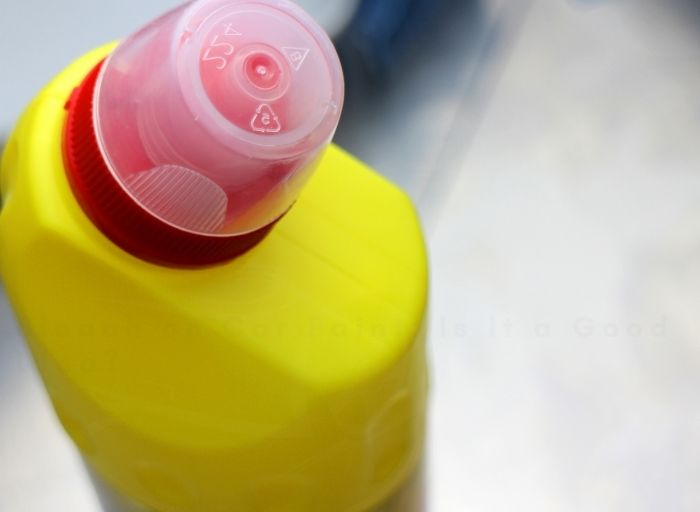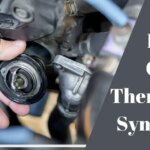
The majority of people use bleach to clean their cars; however, bleach on car paint? Is it a good idea?
Well, undiluted bleach can harm automobile paint if left on the car for an extended period of time.
Bleach is apparently used to clean a variety of items, including garments, toilets, surfaces, and floors. However, bleach may be a good cleaning agent as well as a harsh compound for your car’s paint when used in a car wash. Yes, this is how bleach affects the paint on your automobile.
Table of Contents
Bleach on Car Paint: Does Bleach Ruin Car’s Paint?
Although bleach-and-water solutions are frequently touted for their ability to clean a variety of surfaces, they should not be used on automobiles. When metal is exposed to bleach, it oxidizes and discolors.
When you detect stubborn stains on your car’s paint, one of the things you may do is use bleach to remove them.
Bleach can be used to remove chemical stains. Bleach’s chemical formulation can remove tenacious stains from any surface, including automobiles.
Bleach is highly safe to use in car washing when properly dissolved or combined with a solvent. However, some people dump bleach on a specific area of their car’s paint for various reasons.
While this approach isn’t inherently harmful, leaving the bleach on your automobile for an extended period of time will damage the paint.
What Shouldn’t You Mix with Bleach?
Bleach should not be blended with any other cleaning agent or detergent; it is intended to be used on its own. If you have to add something to it, make it water. You should dissolve bleach in water and then wash your automobile with the bleach/water solution using a microfiber cloth or towel. Again, don’t leave the bleaching water on your car for too long.
In general, bleach can be tolerated by plastics and painted surfaces, but if left for an extended period, it can cause chemical reactions, leading to damage. When washing your car with bleach, do not mix bleach with the following:
- Rubbing alcohol (This mixture will produce chloroform, which makes you pass out)
- Vinegar (The mixture produces chlorine which renders a person unconscious. You should not play around with it. If inhaled by people, the gas can cause coughing and breathing problems)
- Ammonia (Chloramine will be produced by this mixture. When you breathe it in, your chest will experience unbearable discomfort)
Vinegar and bleach mixture produces chlorine gas, which causes coughing and breathing difficulties. Chloramine, a poisonous gas that causes severe chest pain, is produced by mixing ammonia and bleach. Rubbing alcohol with bleach produces chloroform, which can cause unconsciousness.
What Effect Does Bleach Have On Your Car?
# Stripping the paint
When undiluted bleach touches your car’s paint, it reacts with it right away, causing oxidation and, as a result, stripping the paint. Bleach is very reactive and caustic; if unintentionally applied to the skin, it can cause skin burns.
On the other hand, bleach becomes less reactive when diluted in water than when undiluted. If kept on the surface for a long time, even diluted bleach can cause paint oxidation. Bleach, in other words, can harm your automobile paint if left on the surface for too long.
# Stripping car wax
Bleach can remove the wax off your automobile and harm you. Waxing your car is crucial since it helps preserve the clear finish. This additional layer of defense gives your automobile a great, shining appearance and works to stop fading over time.
Wax breaks down when bleach is used because of the presence of an alkaline chemical. Using bleach to wash a car will remove this wax, leaving nothing to preserve the surface and hastening the fading and dulling of your automobile’s finish.
# Ruin metal & rubber parts
Also, bleach will corrode and ruin metal and rubber parts in the engine and fuel system if left in for an extended period of time. Bleach corrodes at a higher rate than regular corrosion.
How to Restore Car Paint Affected by Bleach

Restoring car paint that has been affected by bleach can be a challenging task. Bleach is a strong chemical that can cause significant damage to the paint finish, leading to discoloration, fading, and even corrosion. However, you can try the following steps to minimize the damage and restore the appearance of your car’s paint:
Act quickly
The sooner you address the issue, the better your chances of minimizing the damage. If you notice bleach on your car’s paint, don’t wait too long to take action.
Rinse immediately
Rinse the affected area with plenty of water as soon as possible. This will help dilute and remove any residual bleach on the paint surface. Use a hose or a bucket of water to thoroughly rinse the area.
Wash the car
After rinsing, wash your entire car using a mild car wash soap and a soft sponge or microfiber cloth. This will remove any remaining bleach residue and help prepare the surface for further treatment.
Assess the damage
Carefully examine the affected area to determine the extent of the damage. If the bleach has caused significant paint discoloration or corrosion, professional assistance may be required.
Polishing compound
If the damage is minor, you can try using a polishing compound specifically designed for automotive use. Apply a small amount of the compound to a clean microfiber cloth and gently rub it onto the affected area in circular motions.
Buffing
After applying the polishing compound, use a clean microfiber cloth or a buffer to gently buff the area. This will help remove any remaining stains and restore the shine of the paint.
Waxing and sealing
Once the affected area looks better, apply high-quality car wax or sealant to protect the paint. This will provide a layer of defense against further damage and enhance the vehicle’s overall appearance.
Are There Any Benefits of Using Bleach on Cars?
Bleach can be used to remove minor stains on car paint!
While you shouldn’t usually put bleach on a car, you can sometimes. When stains are set in place, bleach can be removed. Because of bleach’s chemical composition, you can remove minor stains from your car.
If you utilize it properly, you can use this chemical for stain removal. Both bleach and a solvent are necessary. It will then be able to be utilized on your car. However, some people pour bleach on the damaged areas, which is not advised.
Your car’s paint may get harmed as a result of this. It’s crucial that you don’t leave the bleach on your car for an extended amount of time. It will damage the car’s paint.
Using Bleach to Remove Stains from a Car: A Step-by-Step Guide

Bleach is well renowned for its ability to erase stains from virtually anything, including your car’s paint. Even chemical stains can be eliminated with bleach. Making sure the water is correctly diluted is the most difficult step. Keep in mind that there are numerous bleach manufacturers.
Each manufactured thing is unique. However, specific usage instructions will be included with each bottle. For various surfaces, there will be different directions. Let’s examine how to use bleach to wash your car.
Step 1: Wash your car
The initial step is to wash your car as usual. Your car should be spotless. You want to get rid of all the extra dirt. Following this procedure, the car does not need to be dried. Let’s get to the next step.
Step 2: Mixing the solution
Adding bleach to the water is the next step. Never combine any other substances with water. Use only bleach and water on their own. For every gallon of water, use about a half cup of bleach. Verify that the bleach manufacturer recommends this by looking at the bottle.
Step 3: Removing stains
You’re searching for stained spots. For this as well, you should have a towel on hand. This towel will be dipped into the bleach and water mixture. This rag will be used to scrub the stain. Make sure you are concentrating on one area at a time.
The bleach and water mixture shouldn’t be left on the paint for any longer than necessary.
Remove it once the stain has been removed or after the bleach has sat for around three minutes. To prevent problems with your paint, you should make sure it is removed. To rinse your solution, use water. Make care to thoroughly rinse it.
Step 4: Use undiluted bleach for difficult stains
After the car has been cleaned, look for any more stains. Use bleach as-is if you still discover stains after cleaning them. But be cautious; only use a small amount. Be careful to rinse thoroughly to prevent the bleach from ruining your paint. Ideally, you should leave this on your car for no more than a minute.
Advice: If you leave bleach soaking for too long, it will remove any wax that may have been applied to your car.
What Should I Do to Clean My Car’s Paint?

If you wish to avoid using harsh chemicals, you can remove the paint using a razor blade. Use polishing chemicals, bug and tar remover first to soften the paint. Instead, you can run the blade under the paint’s edge or scrape the paint away in many gentle passes with uniform pressure.
Also, using high-quality car wash soap to wash your car regularly is best. A regular car wash keeps your car clean and helps prevent swirl marks and scratches.
Frequently Asked Questions
Is it safe to use bleach on car paint?
No, it is not safe to use bleach on car paint. Bleach is a strong chemical that can cause damage, discoloration, and fading to the paint finish.
Can bleach damage the clear coat of car paint?
Yes, bleach can damage the clear coat of car paint. It can cause the clear coat to become discolored, deteriorate, or even peel off, leading to further damage to the paint.
How can I remove bleach stains from car paint?
Removing bleach stains from car paint can be difficult. It is best to seek professional assistance from an auto body shop or a car detailing specialist who can use specialized techniques and products to address the stains effectively.
What happens when you put bleach on white car paint?
When you put bleach on a white car, it can cause significant damage to the paint. The bleach can cause discoloration, fading, and even corrosion of the paint surface. It may result in visible stains, patches, or areas of uneven color on the car’s white paint. It is important to avoid using bleach or any harsh chemicals on car paint to maintain its appearance and integrity.
Are there any alternative methods to clean car paint?
Yes, alternative methods to clean car paint are safer than using bleach. You can use mild car wash soaps, specifically formulated for automotive use, and soft sponges or microfiber cloths to gently clean the paint surface.
Should I use bleach to clean the car interior?
Using bleach to clean the inside of your car is not recommended. Bleach is a strong chemical that can cause damage to various materials commonly found in car interiors, such as upholstery, carpets, vinyl, and plastic surfaces. It can lead to discoloration, fading, and even deterioration of these materials.
It’s best to use appropriate cleaners and disinfectants specifically formulated for car interiors to ensure effective and safe cleaning.
What steps can I take to prevent car paint damage?
To prevent car paint damage, you can take several steps. You can follow these tips:
- Park your car in shaded or covered areas to avoid prolonged exposure to sunlight, which can fade the paint.
- Regularly wash and wax your car to protect the paint from dirt, debris, and environmental contaminants.
- Avoid using harsh chemicals or abrasive materials on the paint’s surface.
Check out what happens when you fill up a car with bleach!
Conclusion
So, will bleach damage car paint? With everything we’ve discussed thus far, it’s clear that bleach ruins automobile paints, but it doesn’t just happen. Bleach will only damage your car’s paint if left on the surface for an extended period.
Conversely, Bleach is a good chemical for removing stubborn water spots, bird droppings, and other stains that could detract from your car’s aesthetic appeal.
Further Reading:
Hi everyone, My name is Ollie Barker.
As a seasoned auto expert I have 25 years of experience working in repair and detailing shops. I love to share my tips & tricks to all car lovers, so that’s why I’m here at Automotive Gearz publishing my content, sharing my passion. Also, I’ve been giving my recommendations on which products are the best to have on the market. I always thought it was hard to pick the right part, so hopefully I can make that a bit easier for you.
Hope you enjoy your time on my little blog!







